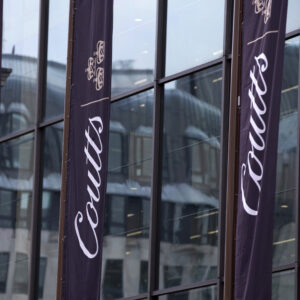Rebalancing client allocations in view of the great rotation
Last year, the S&P 500 experienced its fastest drop in history, taking just 22 trading days to fall 30 per cent from its record high reached on February 19 2019. Since then, equity markets, driven by growth stocks, have recovered steadily and even gained new highs, despite new waves of the pandemic forcing severe lockdowns in some parts of the world.
Positive vaccine developments have given hope that the world’s economy can return to normal and that the stop–start cycle of lockdowns and re-openings can be avoided. At the same time, massive policy stimulus from both fiscal spending and negative real rates remain supportive of economic recovery, offering a bullish environment for risk assets. The S&P 500 is expected to increase by at least five per cent by year end.
Given low rates and tight spread, stocks remain the place to go, as there is seemingly no alternative. These are key findings of PWM’s 6th annual global asset tracker (GAT) study, surveying 50 global, regional and private banks (see Figs 1.1–1.3).

The views of chief investment officers (CIOs) are clearly reflected in their asset allocation decisions. The proportion of private banks having an overweight tactical position to equities has increased from 44 per cent last year to 85 per cent in 2021, with emerging market (EM) equities, and Asia ex Japan in particular, expected to generate the highest risk adjusted returns in 2021 (see Fig 2.2 and 3). Some 80 per cent of CIOs believe clients will increase allocation to equities, as well as private equity (63 per cent) and commodities (41 per cent) during the course of the year (see Fig 4).

Barbell
An effective investment strategy is believed to be for clients to gain exposure to beaten down or cyclical assets, as the great rotation towards value is set to continue, while investing in income-generating assets and structural growth themes.
“We advocate clients to stay invested through a barbell strategy, which means to hold overweight exposures in growth equities on one end, and income assets on the other,” says Hou Wey Fook, CIO at DBS Bank.
On the growth side, investors should buy into innovators, disruptors, enables and adapters (also known as IDEA companies), which would thrive in a world that is fast transforming into a digital economy. Investors should also add “vaccine winners” — companies that were hit hard by the pandemic. On the income side, the preference is for BBB/BB-rated bonds and dividend-yielding stocks including Singapore real estate investment trust.
“The equity market has entered a healthy, broad-based uptrend as value/laggard sectors played catch-up to growth,” says Mr Hou, referring to the strong rebound of travel-related plays, like hotels and airlines, as well as banks and energy stocks. More importantly, this rotation resulted in a ‘broadening’ of the market — no longer one that is led by big tech only. “To us, this is a healthy dynamic which will lead to a sustainable uptrend,” he continues.
This tactical theme which would allow investors to benefit from the economic rebound, investing in the early phase of the cycle, is identified by most private banks. It implies rebalancing portfolio allocations, most often from growth to value stocks, from US to non-US stocks, from large caps to small and medium caps.
Making a comeback
Pictet calls it the ‘revenge of the losers’, with beaten-down consumer discretionary and services sectors recovering fast as they respond to pent-up demand.
“As fiscal stimulus kicks in, we are turning positive on small- and mid-caps,” says César Pérez, CIO and head of investments at Pictet Wealth Management.
While absolute equity valuations look daunting, on a relative basis they are much less so. He believes markets are increasingly pricing in higher inflation, but much less the boost to growth that will come from the fiscal stimulus about to hit economies. “With fiscal stimulus and zero interest rates, one can justify high price-earnings ratios of 20x. If, on top of that, we have little inflation in the next couple of years, people could become more comfortable about equities,” he says.
The Biden administration is an example of this ‘fiscal dominance’ and the launch of a huge new stimulus package, including new cheques for households, would be generally positive for cyclical sectors.

New equity bull cycle
Survey findings show that cyclicals, such as industrials (73 per cent) consumer discretionary (65 per cent) and materials (56 per cent), are expected to generate the most attractive risk return opportunities in 2021.
“We could see a short-term, sharp outperformance of value versus growth,” states Steve Brice, CIO, Standard Chartered Bank in Singapore, explaining that value has experienced one of the worst decades of underperformance relative to growth, and is expected to outperform growth and quality as the recovery broadens beyond Covid-19 beneficiaries over a 12-month period. The bank has packaged this view into a theme call ‘ready, steady, rotate’ to draw investors’ attention.
However, most clients are overweight in US tech and are reluctant to diversify away from growth stocks. Only “a bit of wobble” in the tech space, which has had a stellar performance, may convince clients to review their allocations, he adds.
“The key challenge we have in Asia is to get investors to think in terms of portfolios,” he says, as trading mentality still dominates. Short- and long-term themes helps advisers “coax clients into a more rounded allocation,” so that clients can weather the storm — both the highs and the lows — through the economic and market cycle.
One of the themes that has most appealed to Asian clients since it was launched in 2011 is the multi-asset income, played through a portfolio of diversified assets including bonds, equities and hybrids, as investors gain comfort from underlying assets generating value. After the financial crisis, when people were very bond-focused, it was a back door to giving investors equity exposure. Today too, the aim is to help them get back into the market, as most clients hold significant amount of cash in portfolios.
“We tell clients we believe we are in a new equity bull cycle, a new economic recovery cycle, which will probably last multiple years. While valuations are extremely expensive on a standalone basis, clients should not be excessively concerned, especially as bond yields are so low,” adds Mr Brice. Moreover, while global markets are expecting around 30 per cent earnings growth this year, which is already factored into valuations, the earnings recovery phase is expected to last several years.
Weak dollar, strong returns
Another tactical theme, focused on the dollar slump in 2021, supports the case for risk assets. The US dollar downtrend is likely to gain momentum over the coming year, as the US Fed caps bond yields and the US’s soaring budget and trade deficits weigh on the currency. “A weak dollar would dramatically increase the probability of 2021 being a good year for investors,” says Mr Brice. This view leads the bank to favour non-US, especially EM assets, with overweight positions on Asia and China, as a weak dollar encourages a reversal of 2020 outflows.
Yet, he says, it is difficult for Asian clients to buy into these ideas, as they fear a repeat of last year’s downturn. Rather, they are more interested in structural themes, such as climate change or investing in innovation, which help them see through volatility, believing these areas of portfolios have a significant potential for upside.
Persuading clients to rotate portfolios worries private banks’ CIOs on other continents too. “Wealthy clients are generally overly weighted to growth stocks and they need to refocus on areas that have that combination of high sensitivity to economic growth and reasonable, if not cheap, valuation,” says Katherine Nixon, CIO for wealth management at US private bank Northern Trust.
These include not only value stocks such as financials and industrials, but also deep cyclical calls such as transportation stocks, as well as small caps, which have been really “kicked to the curb” during the pandemic. Areas of the world which tend to have more value exposure, such as European equities, are also attractive, as are EMs which have a high sensitivity to global growth.
“I typically get a little nervous when things are so in consensus, but the rotation trade has legs,” adds Ms Nixon. At the same time, portfolios need to be well balanced with “fortress companies”. These tend to be large cap growth stocks, with flexible operational models, strong balance sheets and cash flows which have benefited from trends accelerated by the pandemic, such as working from home, ecommerce, digital transformation and technology — all on the bank’s radar before Covid-19.
The race between nature and science
The favourable environment for risk assets is marred by a few key risks. The most visible are related to pandemic-containment efforts which could reverse the recovery, as new virus variants could threaten governments’ ability to keep Covid-19 under control, and significant delays in the deployment of vaccines could make it harder to prevent long-term economic scarring.
The question is whether the gap between economic fundamentals and markets is going to continue. “Markets have taken a forward-looking view, fuelled by the powerful tailwind of monetary and fiscal policies,” says Nannette Hechler-Fayd’herbe, CIO for international wealth management at Credit Suisse. The development of successful vaccines at the fastest pace in human history contributed to drive markets higher. In addition, one of the “solid anchors” of optimism has been the Asian growth story, driven by China, as the region has already been able to minimise the impact of the pandemic on its economy.
“This makes us quite comfortable that fundamentals will adjust to expectations already formed in financial markets.” Corporate earnings will catch up with valuations during the rest of 2021, but “the race between nature and science” is going to continue to take place, with markets continuously assessing whether expectations were right, too low or too high, and reacting to that. However, even in this very uncertain environment, with potential further shocks along the line, volatility is likely to be kept under control. “Whenever we have bouts of volatility, it is safer to assume volatility will come down again, given central banks’ continued liquidity injection,” says Ms Hechler-Fayd’herbe.
Another type of risk is related to a better-than-expected recovery, with the re-opening of economies driving supply/demand imbalances. Although these may be short term, the risk is that the market begins to integrate higher inflation into forecasts, driving interest rates higher. This would lead to expectations that central banks would start to taper and roll back some of their monetary policies sooner than expected.
Measures to take the virus under control include not only vaccines, but also public health initiatives, such as vaccination passports, which will allow the travel industry to resume. Some sectors of the economy will be affected permanently, believes Ms Hechler-Fayd’herbe. “I do not think business travel will ever come back as it was before, as this is a massive source of cost saving for many companies.”
While there may be further setbacks, many clients that still have an underweight position in equities should take them as an opportunity to get into the market, she adds. Among others, Credit Suisse has an overweight position to non-US equities, including EMs, with China and select European markets being its most preferred investments. “This is not to say that US equities cannot continue to have upside opportunity, but the rest of the world has more catch up to do.”



